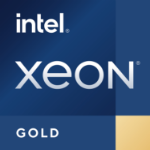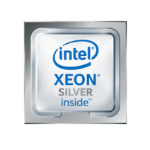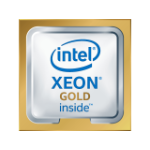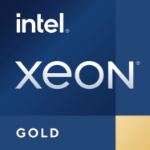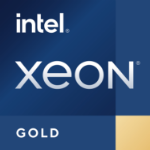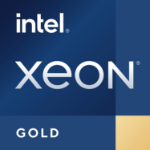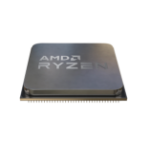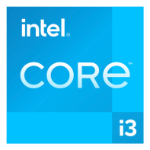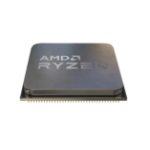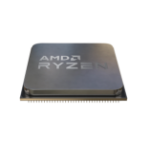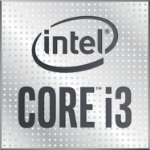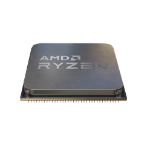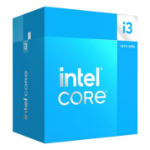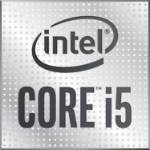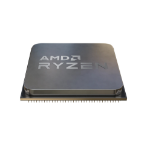Intel Pentium Gold G7400 processor 3.7 GHz 6 MB Smart Cache Box
£84.35
£70.29
Intel Pentium Gold G7400 Processor (6M Cache, 3.70 GHz)
More Information
| Processor socket | LGA 1700 |
|---|---|
| Box | Yes |
| Processor cores | 2 |
| Processor family | Intel Pentium Gold |
| SKU | BX80715G7400 |
| EAN | 5032037238410 |
| Manufacturer | Intel |
| Availability | Y |
| Product Family | Pentium |
| Product Series | Gold |
Description
Intel® Virtualization Technology for Directed I/O (VT-d)
Intel® Virtualization Technology for Directed I/O (VT-d) continues from the existing support for IA-32 (VT-x) and Itanium® processor (VT-i) virtualization adding new support for I/O-device virtualization. Intel VT-d can help end users improve security and reliability of the systems and also improve performance of I/O devices in virtualized environments.
Intel® Virtualization Technology (VT-x)
Intel® Virtualization Technology (VT-x) allows one hardware platform to function as multiple “virtual” platforms. It offers improved manageability by limiting downtime and maintaining productivity by isolating computing activities into separate partitions.
Intel® 64
Intel® 64 architecture delivers 64-bit computing on server, workstation, desktop and mobile platforms when combined with supporting software.¹ Intel 64 architecture improves performance by allowing systems to address more than 4 GB of both virtual and physical memory.
Intel® Clear Video HD Technology
Intel® Clear Video HD Technology, like its predecessor, Intel® Clear Video Technology, is a suite of image decode and processing technologies built into the integrated processor graphics that improve video playback, delivering cleaner, sharper images, more natural, accurate, and vivid colors, and a clear and stable video picture. Intel® Clear Video HD Technology adds video quality enhancements for richer color and more realistic skin tones.
Cache
CPU Cache is an area of fast memory located on the processor. Intel® Smart Cache refers to the architecture that allows all cores to dynamically share access to the last level cache.
Intel® AES New Instructions
Intel® AES New Instructions (Intel® AES-NI) are a set of instructions that enable fast and secure data encryption and decryption. AES-NI are valuable for a wide range of cryptographic applications, for example: applications that perform bulk encryption/decryption, authentication, random number generation, and authenticated encryption.
Idle States
Idle States (C-states) are used to save power when the processor is idle. C0 is the operational state, meaning that the CPU is doing useful work. C1 is the first idle state, C2 the second, and so on, where more power saving actions are taken for numerically higher C-states.
Execute Disable Bit
Execute Disable Bit is a hardware-based security feature that can reduce exposure to viruses and malicious-code attacks and prevent harmful software from executing and propagating on the server or network.
Intel® Hyper-Threading Technology
Intel® Hyper-Threading Technology (Intel® HT Technology) delivers two processing threads per physical core. Highly threaded applications can get more work done in parallel, completing tasks sooner.
Instruction Set
An instruction set refers to the basic set of commands and instructions that a microprocessor understands and can carry out. The value shown represents which Intel’s instruction set this processor is compatible with.
Intel® Quick Sync Video
Intel® Quick Sync Video delivers fast conversion of video for portable media players, online sharing, and video editing and authoring.
Intel® VT-x with Extended Page Tables (EPT)
Intel® VT-x with Extended Page Tables (EPT), also known as Second Level Address Translation (SLAT), provides acceleration for memory intensive virtualized applications. Extended Page Tables in Intel® Virtualization Technology platforms reduces the memory and power overhead costs and increases battery life through hardware optimization of page table management.
Intel® Optane™ Memory Supported
Intel® Optane™ memory is a revolutionary new class of non-volatile memory that sits in between system memory and storage to accelerate system performance and responsiveness. When combined with the Intel® Rapid Storage Technology Driver, it seamlessly manages multiple tiers of storage while presenting one virtual drive to the OS, ensuring that data frequently used resides on the fastest tier of storage. Intel® Optane™ memory requires specific hardware and software configuration.
Enhanced Intel SpeedStep® Technology
Enhanced Intel SpeedStep® Technology is an advanced means of enabling high performance while meeting the power-conservation needs of mobile systems. Conventional Intel SpeedStep® Technology switches both voltage and frequency in tandem between high and low levels in response to processor load. Enhanced Intel SpeedStep® Technology builds upon that architecture using design strategies such as Separation between Voltage and Frequency Changes, and Clock Partitioning and Recovery.
Secure Key
Intel® Secure Key consists of a digital random number generator that creates truly random numbers to strengthen encryption algorithms.
Intel® Speed Shift Technology
Intel® Speed Shift Technology uses hardware-controlled P-states to deliver dramatically quicker responsiveness with single-threaded, transient (short duration) workloads, such as web browsing, by allowing the processor to more quickly select its best operating frequency and voltage for optimal performance and power efficiency.
Intel® Deep Learning Boost (Intel® DL Boost) on CPU
A new set of embedded processor technologies designed to accelerate AI deep learning use cases. It extends Intel AVX-512 with a new Vector Neural Network Instruction (VNNI) that significantly increases deep learning inference performance over previous generations.
Instruction Set Extensions
Instruction Set Extensions are additional instructions which can increase performance when the same operations are performed on multiple data objects. These can include SSE (Streaming SIMD Extensions) and AVX (Advanced Vector Extensions).
Thermal Monitoring Technologies
Thermal Monitoring Technologies protect the processor package and the system from thermal failure through several thermal management features. An on-die Digital Thermal Sensor (DTS) detects the core's temperature, and the thermal management features reduce package power consumption and thereby temperature when required in order to remain within normal operating limits.
Intel® Volume Management Device (VMD)
Intel® Volume Management Device (VMD) provides a common, robust method of hot plug and LED management for NVMe-based solid state drives.
Intel® Gaussian & Neural Accelerator
Intel® Gaussian & Neural Accelerator (GNA) is an ultra-low power accelerator block designed to run audio and speed-centric AI workloads. Intel® GNA is designed to run audio based neural networks at ultra-low power, while simultaneously relieving the CPU of this workload.
Mode-based Execute Control (MBEC)
Mode-based Execute Control can more reliably verify and enforce the integrity of kernel level code.
Intel® Boot Guard
Intel® Device Protection Technology with Boot Guard helps protect the system’s pre-OS environment from viruses and malicious software attacks.
Intel® Control-Flow Enforcement Technology
CET - Intel Control-flow Enforcement Technology (CET) helps protect against the misuse of legitimate code snippets through return-oriented programming (ROP) control-flow hijacking attacks.
Intel® Virtualization Technology for Directed I/O (VT-d) continues from the existing support for IA-32 (VT-x) and Itanium® processor (VT-i) virtualization adding new support for I/O-device virtualization. Intel VT-d can help end users improve security and reliability of the systems and also improve performance of I/O devices in virtualized environments.
Intel® Virtualization Technology (VT-x)
Intel® Virtualization Technology (VT-x) allows one hardware platform to function as multiple “virtual” platforms. It offers improved manageability by limiting downtime and maintaining productivity by isolating computing activities into separate partitions.
Intel® 64
Intel® 64 architecture delivers 64-bit computing on server, workstation, desktop and mobile platforms when combined with supporting software.¹ Intel 64 architecture improves performance by allowing systems to address more than 4 GB of both virtual and physical memory.
Intel® Clear Video HD Technology
Intel® Clear Video HD Technology, like its predecessor, Intel® Clear Video Technology, is a suite of image decode and processing technologies built into the integrated processor graphics that improve video playback, delivering cleaner, sharper images, more natural, accurate, and vivid colors, and a clear and stable video picture. Intel® Clear Video HD Technology adds video quality enhancements for richer color and more realistic skin tones.
Cache
CPU Cache is an area of fast memory located on the processor. Intel® Smart Cache refers to the architecture that allows all cores to dynamically share access to the last level cache.
Intel® AES New Instructions
Intel® AES New Instructions (Intel® AES-NI) are a set of instructions that enable fast and secure data encryption and decryption. AES-NI are valuable for a wide range of cryptographic applications, for example: applications that perform bulk encryption/decryption, authentication, random number generation, and authenticated encryption.
Idle States
Idle States (C-states) are used to save power when the processor is idle. C0 is the operational state, meaning that the CPU is doing useful work. C1 is the first idle state, C2 the second, and so on, where more power saving actions are taken for numerically higher C-states.
Execute Disable Bit
Execute Disable Bit is a hardware-based security feature that can reduce exposure to viruses and malicious-code attacks and prevent harmful software from executing and propagating on the server or network.
Intel® Hyper-Threading Technology
Intel® Hyper-Threading Technology (Intel® HT Technology) delivers two processing threads per physical core. Highly threaded applications can get more work done in parallel, completing tasks sooner.
Instruction Set
An instruction set refers to the basic set of commands and instructions that a microprocessor understands and can carry out. The value shown represents which Intel’s instruction set this processor is compatible with.
Intel® Quick Sync Video
Intel® Quick Sync Video delivers fast conversion of video for portable media players, online sharing, and video editing and authoring.
Intel® VT-x with Extended Page Tables (EPT)
Intel® VT-x with Extended Page Tables (EPT), also known as Second Level Address Translation (SLAT), provides acceleration for memory intensive virtualized applications. Extended Page Tables in Intel® Virtualization Technology platforms reduces the memory and power overhead costs and increases battery life through hardware optimization of page table management.
Intel® Optane™ Memory Supported
Intel® Optane™ memory is a revolutionary new class of non-volatile memory that sits in between system memory and storage to accelerate system performance and responsiveness. When combined with the Intel® Rapid Storage Technology Driver, it seamlessly manages multiple tiers of storage while presenting one virtual drive to the OS, ensuring that data frequently used resides on the fastest tier of storage. Intel® Optane™ memory requires specific hardware and software configuration.
Enhanced Intel SpeedStep® Technology
Enhanced Intel SpeedStep® Technology is an advanced means of enabling high performance while meeting the power-conservation needs of mobile systems. Conventional Intel SpeedStep® Technology switches both voltage and frequency in tandem between high and low levels in response to processor load. Enhanced Intel SpeedStep® Technology builds upon that architecture using design strategies such as Separation between Voltage and Frequency Changes, and Clock Partitioning and Recovery.
Secure Key
Intel® Secure Key consists of a digital random number generator that creates truly random numbers to strengthen encryption algorithms.
Intel® Speed Shift Technology
Intel® Speed Shift Technology uses hardware-controlled P-states to deliver dramatically quicker responsiveness with single-threaded, transient (short duration) workloads, such as web browsing, by allowing the processor to more quickly select its best operating frequency and voltage for optimal performance and power efficiency.
Intel® Deep Learning Boost (Intel® DL Boost) on CPU
A new set of embedded processor technologies designed to accelerate AI deep learning use cases. It extends Intel AVX-512 with a new Vector Neural Network Instruction (VNNI) that significantly increases deep learning inference performance over previous generations.
Instruction Set Extensions
Instruction Set Extensions are additional instructions which can increase performance when the same operations are performed on multiple data objects. These can include SSE (Streaming SIMD Extensions) and AVX (Advanced Vector Extensions).
Thermal Monitoring Technologies
Thermal Monitoring Technologies protect the processor package and the system from thermal failure through several thermal management features. An on-die Digital Thermal Sensor (DTS) detects the core's temperature, and the thermal management features reduce package power consumption and thereby temperature when required in order to remain within normal operating limits.
Intel® Volume Management Device (VMD)
Intel® Volume Management Device (VMD) provides a common, robust method of hot plug and LED management for NVMe-based solid state drives.
Intel® Gaussian & Neural Accelerator
Intel® Gaussian & Neural Accelerator (GNA) is an ultra-low power accelerator block designed to run audio and speed-centric AI workloads. Intel® GNA is designed to run audio based neural networks at ultra-low power, while simultaneously relieving the CPU of this workload.
Mode-based Execute Control (MBEC)
Mode-based Execute Control can more reliably verify and enforce the integrity of kernel level code.
Intel® Boot Guard
Intel® Device Protection Technology with Boot Guard helps protect the system’s pre-OS environment from viruses and malicious software attacks.
Intel® Control-Flow Enforcement Technology
CET - Intel Control-flow Enforcement Technology (CET) helps protect against the misuse of legitimate code snippets through return-oriented programming (ROP) control-flow hijacking attacks.
Specifications
| Processor | |
|---|---|
| Processor base frequency | 3.7 GHz |
| Processor manufacturer | Intel |
| Processor codename | Alder Lake |
| Memory bandwidth supported by processor (max) | 76.8 GB/s |
| Processor cache | 6 MB |
| Processor ARK ID | 219435 |
| Processor model | G7400 |
| Processor threads | 4 |
| Processor operating modes | 64-bit |
| Stepping | H0 |
| Bus type | DMI4 |
| Processor family | Intel® Pentium® Gold |
| Processor cores | 2 |
| Processor socket | LGA 1700 |
| Processor cache type | Smart Cache |
| Package type | Box |
| Performance cores | 2 |
| Efficient cores | 0 |
| Performance-core base frequency | 3.7 GHz |
| Processor base power | 46 W |
| Maximum number of DMI lanes | 8 |
| Memory | |
| Maximum internal memory supported by processor | 128 GB |
| Memory types supported by processor | DDR4-SDRAM, DDR5-SDRAM |
| Memory bandwidth supported by processor (max) | 76.8 GB/s |
| Memory channels | Dual-channel |
| Memory bandwidth (max) | 76.8 GB/s |
| Graphics | |
| Discrete graphics card | No |
| On-board graphics card outputs supported | Embedded DisplayPort (eDP) 1.4b, DisplayPort 1.4a, HDMI 2.1 |
| On-board graphics card maximum resolution (DisplayPort) | 7680 x 4320 pixels |
| Number of execution units | 16 |
| On-board graphics card ID | 0x4693 |
| On-board graphics card maximum resolution (eDP - Integrated Flat Panel) | 5120 x 3200 pixels |
| On-board graphics card refresh rate at maximum resolution (HDMI) | 60 Hz |
| On-board graphics card refresh rate at maximum resolution (DisplayPort) | 60 Hz |
| On-board graphics card refresh rate at maximum resolution (eDP - Integrated Flat Panel) | 120 Hz |
| Number of displays supported (on-board graphics) | 4 |
| On-board graphics card maximum resolution (HDMI) | 4096 x 2160 pixels |
| On-board graphics card DirectX version | 12.0 |
| On-board graphics card OpenGL version | 4.5 |
| On-board graphics card model | Intel UHD Graphics 710 |
| On-board graphics card | Yes |
| On-board graphics card dynamic frequency (max) | 1350 MHz |
| On-board graphics card base frequency | 300 MHz |
| Discrete graphics card model | Not available |
| Multi-Format Codec Engines | 1 |
| Technical details | |
| Intel® Secure Key | Yes |
| Thermal Monitoring Technologies | Yes |
| Intel® Turbo Boost Technology | No |
| Intel® Quick Sync Video Technology | Yes |
| Intel® Hyper Threading Technology (Intel® HT Technology) | Yes |
| Intel® Clear Video HD Technology (Intel® CVT HD) | Yes |
| Intel® AES New Instructions (Intel® AES-NI) | Yes |
| Idle States | Yes |
| Execute Disable Bit | Yes |
| Enhanced Intel SpeedStep Technology | Yes |
| PCI Express slots version | 5.0, 4.0 |
| PCI Express configurations | 1x16+1x4, 2x8+1x4 |
| Supported instruction sets | SSE4.1, SSE4.2, AVX 2.0 |
| Scalability | 1S |
| Intel VT-x with Extended Page Tables (EPT) | Yes |
| Embedded options available | No |
| CPU configuration (max) | 1 |
| Graphics output | eDP 1.4b, DP 1.4a, HDMI 2.1 |
| Intel Virtualization Technology for Directed I/O (VT-d) | Yes |
| Intel 64 | Yes |
| Status | Launched |
| Market segment | Desktop |
| Launch date | Q1'22 |
| Intel Virtualization Technology (VT-x) | Yes |
| Processor cache type | Smart Cache |
| OpenCL version | 2.1 |
| Features | |
| On-board graphics card ID | 0x4693 |
| Maximum number of PCI Express lanes | 20 |
| Processor package size | 45 x 37.5 mm |
| Processor ARK ID | 219435 |
| Thermal Monitoring Technologies | Yes |
| Idle States | Yes |
| Execute Disable Bit | Yes |
| PCI Express slots version | 5.0, 4.0 |
| PCI Express configurations | 1x16+1x4, 2x8+1x4 |
| Supported instruction sets | SSE4.1, SSE4.2, AVX 2.0 |
| Scalability | 1S |
| Embedded options available | No |
| CPU configuration (max) | 1 |
| Market segment | Desktop |
| Harmonized System (HS) code | 85423119 |
| Export Control Classification Number (ECCN) | 5A992CN3 |
| Commodity Classification Automated Tracking System (CCATS) | G167599 |
| Use conditions | PC/Client/Tablet |
| Direct Media Interface (DMI) Revision | 4.0 |
| Processor special features | |
|---|---|
| Intel Virtualization Technology for Directed I/O (VT-d) | Yes |
| Intel 64 | Yes |
| Intel Turbo Boost Max Technology 3.0 | No |
| Intel® Speed Shift Technology | Yes |
| Intel® Optane™ Memory Ready | Yes |
| Intel® OS Guard | Yes |
| Intel® Secure Key | Yes |
| Intel® Turbo Boost Technology | No |
| Intel® Quick Sync Video Technology | Yes |
| Intel® Hyper Threading Technology (Intel® HT Technology) | Yes |
| Intel® Clear Video HD Technology (Intel® CVT HD) | Yes |
| Intel® AES New Instructions (Intel® AES-NI) | Yes |
| Enhanced Intel SpeedStep Technology | Yes |
| Intel VT-x with Extended Page Tables (EPT) | Yes |
| Intel Virtualization Technology (VT-x) | Yes |
| Intel® Boot Guard | Yes |
| Intel® Volume Management Device (VMD) | Yes |
| Intel® Deep Learning Boost (Intel® DL Boost) on CPU | Yes |
| Mode-based Execute Control (MBE) | Yes |
| Intel® Control-flow Enforcement Technology (CET) | Yes |
| Intel® Thread Director | No |
| Intel® Gaussian & Neural Accelerator (Intel® GNA) 3.0 | Yes |
| Intel® Standard Manageability (ISM) | Yes |
| Operational conditions | |
| Tjunction | 100 °C |
| Packaging data | |
| Package type | Box |
| Logistics data | |
| Harmonized System (HS) code | 85423119 |
| Weight & dimensions | |
| Processor package size | 45 x 37.5 mm |
| Other features | |
| Maximum internal memory | 128 GB |
| CPU configuration (max) | 1 |
| Graphics output | eDP 1.4b, DP 1.4a, HDMI 2.1 |
Delivery Details
- UK distributors.
- Order before 4 pm for next-day delivery.
- Standard (2-3 days) £7.50
- Next Day £9.99
- Free standard delivery over £100
There are deivery surcharges to these postcodes:
| Postcode | Charge |
| IV3-40 | £20 |
| IV52-54 | £20 |
| IV63 | £20 |
| KW1-14 | £20 |
| PA10-40 | £20 |
| PH19-40 | £20 |
| PH50 | £20 |
| HS | £50 |
| IV41-51 | £50 |
| IV55-56 | £50 |
| KA27-28 | £50 |
| KW15-17 | £50 |
| PA41-49 | £50 |
| PA60-62 | £50 |
| PA76-78 | £50 |
| PH41-44 | £50 |
| ZE | £50 |
| IM | £50 |
| JE | £50 |
| GY | £50 |
| TR21-25 | £50 |
| BT | £20 |
Suggested Products
Lenovo Intel Xeon Gold 6142 processor 2.6 GHz 22 M...
Shop NowHPE Intel Xeon-Silver 4214R processor 2.4 GHz 16 M...
Shop NowLenovo Intel Xeon Gold 6146 processor 3.2 GHz 24.7...
Shop NowIntel Xeon 5222 processor 3.8 GHz 16.5 MB Tray
Shop NowCisco Intel Xeon Gold 5218R processor 2.1 GHz 27.5...
Shop NowCisco Intel Xeon Gold 6150 processor 2.7 GHz 24.75...
Shop NowCisco Intel Xeon Gold 6230 processor 2.1 GHz 27.5 ...
Shop NowLenovo Intel Xeon Gold 6142 processor 2.6 GHz 22 M...
Shop NowLenovo Intel Xeon Gold 6142 processor 2.6 GHz 22 M...
Shop NowLenovo Intel Xeon Gold 6142 processor 2.6 GHz 22 M...
Shop NowCisco Intel Xeon Gold 6142 processor 2.6 GHz 22 MB...
Shop NowLenovo Intel Xeon Gold 6142 processor 2.6 GHz 22 M...
Shop NowLenovo Intel Xeon Gold 6142 processor 2.6 GHz 22 M...
Shop NowLenovo Intel Xeon Gold 6142 processor 2.6 GHz 22 M...
Shop NowLenovo Intel Xeon Gold 6142 processor 2.6 GHz 22 M...
Shop NowCisco Intel Xeon Gold 6240 processor 2.6 GHz 25 MB...
Shop NowAMD Ryzen 3 PRO 5355G processor 4 GHz 8 MB L3
Shop NowIntel Core i3-14100F processor 12 MB Smart Cache T...
Shop NowAMD Ryzen 3 3200G processor 3.6 GHz 4 MB L3 Tray
Shop NowAMD Ryzen 3 4100 processor 3.8 GHz 4 MB L3 Tray
Shop NowAMD Ryzen 5 3400G processor 3.7 GHz 4 MB L3 Box
Shop NowAMD Ryzen 5 5500 processor 3.6 GHz 16 MB L3 Tray
Shop NowIntel Core i3-10105F processor 3.7 GHz 6 MB Smart ...
Shop NowAMD Ryzen 5 5600 processor 3.5 GHz 32 MB L3 Tray
Shop NowAMD Ryzen 5 5500 processor 3.6 GHz 16 MB L3 Box
Shop NowIntel Core i3-14100F processor 12 MB Smart Cache B...
Shop NowIntel Core i5-10400F processor 2.9 GHz 12 MB Smart...
Shop NowIntel Core i3-12100F processor 12 MB Smart Cache B...
Shop NowAMD Ryzen 5 4500 processor 3.6 GHz 8 MB L3 Box
Shop NowAMD Ryzen 5 5500GT processor 3.6 GHz 16 MB L3 Box
Shop NowIntel Pentium Gold G6405 processor 4.1 GHz 4 MB Sm...
Shop NowIntel Pentium Gold G6605 processor 4.3 GHz 4 MB Sm...
Shop NowIntel Pentium Gold G6500 processor 4.1 GHz 4 MB Sm...
Shop NowIntel Pentium Gold G6600 processor 4.2 GHz 4 MB Sm...
Shop NowIntel Pentium Gold G6400 processor 4 GHz 4 MB Smar...
Shop NowYou may also be interested in
| Product |
 Intel Pentium Gold G7400 processor 3.7...
Intel Pentium Gold G7400 processor 3.7...
£84.35
£70.29
|
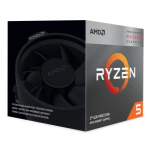
Recommended
AMD Ryzen 5 3400G processor 3.7 GHz 4...
£74.70
£62.25
|
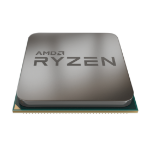 AMD Ryzen 3 3200G processor 3.6 GHz 4...
AMD Ryzen 3 3200G processor 3.6 GHz 4...
£72.49
£60.41
|
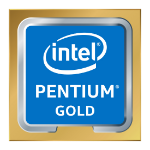
Bestseller
Intel Pentium Gold G6400 processor 4 G...
£82.31
£68.59
|

Popular
Intel Pentium Gold G6600 processor 4.2...
£96.54
£80.45
|

Hot Product
Intel Pentium Gold G6500 processor 4.1...
£87.29
£72.74
|
|---|---|---|---|---|---|---|
| SKU |
BX80715G7400
|
YD3400C5FHBOX
|
YD3200C5M4MFH
|
BX80701G6400
|
BX80701G6600
|
BX80701G6500
|
| Manufacturer |
Intel
|
AMD
|
AMD
|
Intel
|
Intel
|
Intel
|
| Processor lithography |
N/A
|
up to 22nm
|
up to 22nm
|
up to 22nm
|
up to 22nm
|
up to 22nm
|
| Processor family |
Intel Pentium Gold
|
AMD Ryzen 5
|
AMD Ryzen 3
|
Intel Pentium Gold
|
Intel Pentium Gold
|
Intel Pentium Gold
|
| Processor socket |
LGA 1700
|
Socket AM4
|
Socket AM4
|
LGA 1200 (Socket H5)
|
LGA 1200 (Socket H5)
|
LGA 1200 (Socket H5)
|
| Processor cores |
2
|
4
|
4
|
2
|
2
|
2
|
| On-board graphics adapter |
Y
|
Y
|
Y
|
Y
|
Y
|
Y
|
| Discrete graphics adapter |
N
|
N
|
N
|
N
|
N
|
N
|
| Cooler included |
N/A
|
Y
|
N
|
Y
|
Y
|
Y
|
| Package type |
Box
|
Box
|
Tray
|
Box
|
Box
|
Box
|




